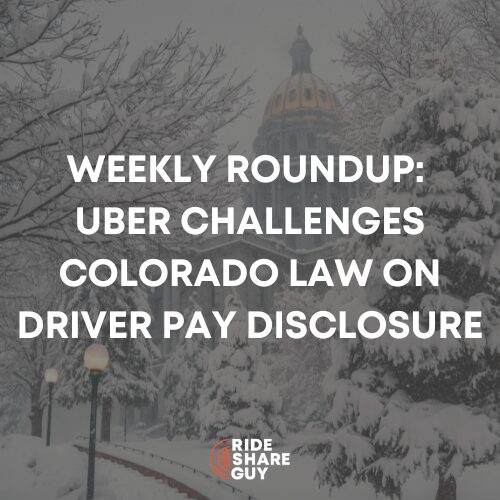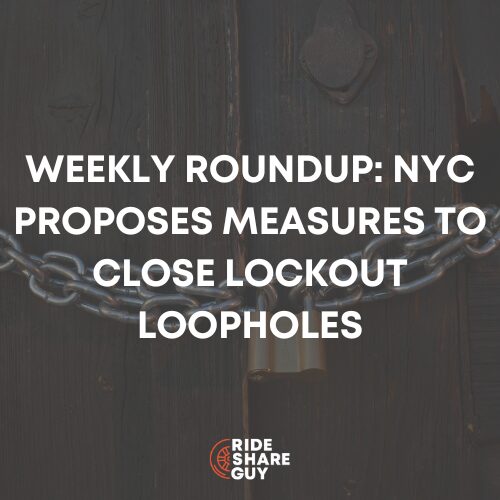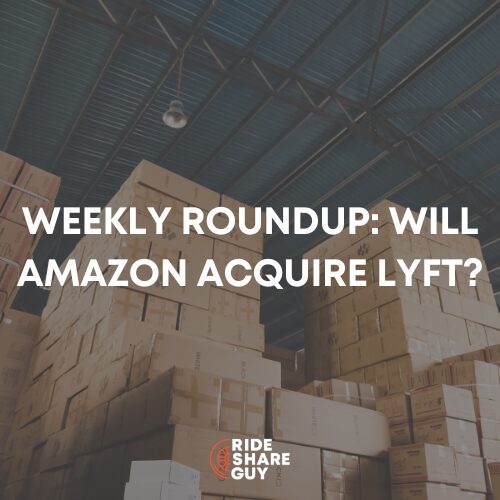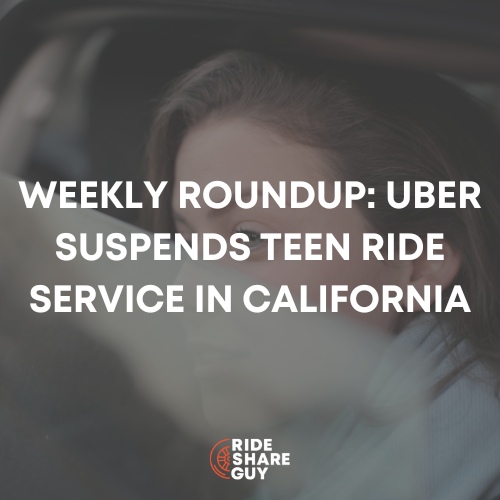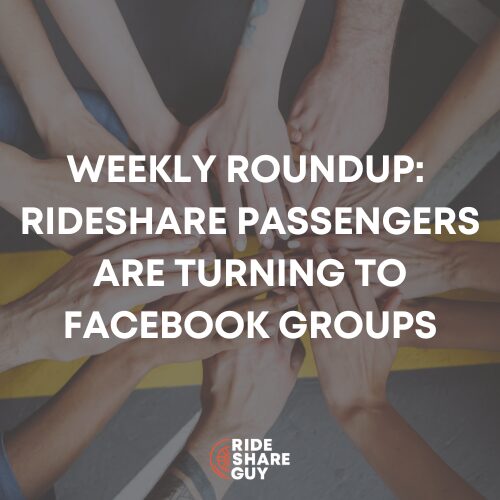Harry here. I don’t know how many outstanding lawsuits Uber is currently facing, but the more I think about it, I should have been a lawyer. We’re still waiting to hear if Judge Chen will approve the $84 million Uber misclassification settlement, but all signs point to no. We’ll be sure to keep you updated on that one.
Today, RSG contributor John Ince shares his take on the recent slew of Uber lawsuits and a couple ‘interesting’ new updates to the Uber app.
Sparks Fly At Uber Settlement Hearing
Sum and Substance: SAN FRANCISCO — Tempers flared in a packed courtroom Thursday as Uber battled to protect the business model that has made it the world’s most valuable startup and has fueled the growing on-demand economy.
More than 100 drivers, lawyers, journalists and spectators squeezed into the hearing in San Francisco federal court as attorneys sparred over an $84 million settlement that lets Uber avoid treating its drivers like regular employees.
Meanwhile, in a courtroom next door, another federal judge expressed concerns over a $27 million settlement proposed by Uber competitor Lyft in a similar case. At the heart of the issue is how Uber, Lyft and other on-demand companies classify their drivers and couriers as independent contractors instead of employees. That business model allows the companies to avoid the cost of overtime pay and reimbursement for work expenses. And the issue doesn’t appear to be going away — a group of Uber drivers in New York filed yet another class action lawsuit Thursday accusing Uber of denying its drivers basic employee rights.
In San Francisco, U.S. District Judge Edward Chen did not indicate whether he will allow the $84 million Uber settlement to go forward, but he spent more than three hours grilling the lawyers who drafted the deal — heeding written objections from dozens of drivers and outside attorneys who view the settlement as a sell out. The line of questioning had Boston-based attorney Shannon Liss-Riordan, who represents drivers in the case, playing defense.
Several lawyers took issue with the settlement because it would block their own lawsuits against Uber. Los Angeles lawyer Mark Geragos, known for representing high-profile clients including Michael Jackson and singer Chris Brown, accused Liss-Riordan of improperly conspiring with Uber. “It’s obvious what happened here,” he said, “Ms. Riordan decided she was going to go into a mediation with Uber, she was going to give global peace to Uber, and she was going to do it by … hijacking another case in this very courtroom. And that is what on its face shows collusion.”
Geragos represents former named plaintiff Douglas O’Connor, who recently withdrew his support from the settlement and cut ties with Liss-Riordan. Geragos and other attorneys claim the settlement unfairly prohibits them from holding Uber accountable for failing to provide drivers with benefits including overtime pay, meal breaks and workers’ compensation pay — claims they say are worth much more than what Liss-Riordan got for them. “The class deserves better than that,” said Palm Desert attorney Christopher Morosoff.
My Take: It’s interesting how the ridesharing industry is increasingly being shaped by lawsuits and judges. Anyone who follows this space is well aware that Shannon Liss Riordan quickly went from white knight to bete noire with what was generally regarded by drivers as a sellout settlement – in both the Lyft and Uber cases.
The judge in the Lyft case has already told the parties to come up with a more reasonable settlement and it looks like Judge Chen in he Uber case is also leaning that way. Then, just as I was wrapping up this roundup, another breaking lawsuit came across the wire. Today, the drivers in Austin sued Uber and Lyft for allegedly violating a federal law that requires companies to provide 60 days notice before a mass layoff. You can read about it here. That case, of course, presupposes that drivers are employees, not independent contractors, which is an issue still being litigated. I can’t keep all these lawsuits straight any more. How about you?
U.S. judge probes Uber over allegations of fraud in antitrust case
Sum and Substance: Uber must hand over documents to a New York judge probing whether private investigators hired by the ride-hailing company fraudulently sought information about its opponents in an antitrust case, according to a court ruling on Tuesday.
U.S. District Judge Jed Rakoff is seeking to determine whether Uber instructed an investigator to lie in order to elicit information about Spencer Meyer, lead plaintiff in the antitrust lawsuit, and his attorney.
The suit, filed in December, alleges that Uber chief executive Travis Kalanick engaged in a price-fixing scheme with Uber drivers. The proposed class action names Kalanick and not the ride-hailing company, though Uber is seeking to intervene in the lawsuit. In one instance, an investigator hired by Uber allegedly called Meyer’s attorney’s professional colleagues and “falsely stated that he was compiling a profile of up-and-coming labor lawyers in the United States,” Rakoff wrote. When confronted about the investigator’s calls, attorneys for Kalanick initially denied that the company was involved with them, according to court documents.
In court filings, Kalanick’s attorneys eventually acknowledged hiring an investigator from a company called Ergo to dig up information about Meyer. However, Uber denied in a court filing that it knew the investigator had lied or concealed his identity. The lawsuit alleges that “Uber has a simple but illegal business plan: to fix prices among competitors and take a cut of the profits.” It argues that drivers conspired with Kalanick to charge fares set by Uber’s algorithm, with an understanding that other Uber drivers would do the same, even if they might do better setting more competitive prices on their own.
In his order of Tuesday, Rakoff said he wanted evidence backing Uber’s assertions that it did not know about the misrepresentations. “An Ergo investigator hired by Uber in connection with this case made false representations in order to gain access to information about plaintiff and his counsel, thus raising a serious risk of perverting the process of justice before this Court,” Rakoff wrote in his order.
My Take: Of all the anti-Uber lawsuits out there, this one is to me the most intriguing. It’s filed not against the company, but against its CEO, Travis Kalanick. This has several important implications. First, it’s easier to obtain class action status, because there is no arbitration agreement involved, which is an impediment to class action status. Secondly, Kalanick is personally on the hook on this one.
I’m not a lawyer, but maybe some of the legal experts out there can tell me whether Kalanick could actually serve jail time if he were found guilty of conspiring to fix prices. This ruling from the judge ups the ante here by calling out Kalanick for hiring a Private Investigator to dig up dirt on the plaintive, any way they can. As we all know, Uber would never misrepresent what they did here. Right? With so much happening on the legal front, the Onion parody (below) seems especially appropriate.
New Uber Update Allows Users To File Lawsuit Against Company Directly In App
Sum and Substance: SAN FRANCISCO—In a move designed to streamline the product’s interface and facilitate one of the more common interactions between customers and the ride-sharing service, Uber announced Wednesday that its newest update would allow users to file a lawsuit against the company from directly within the app.
“We’ve listened to the community, and we’re excited to introduce a feature that will make bringing litigation against us—whether for sexual harassment, racial profiling, or aggravated assault—as quick and easy as hailing a ride,” said Uber co-founder and CEO Travis Kalanick, demonstrating the app’s new “Sue Us” button, conveniently located in the main menu. “The app already contains all your biographical information, which integrates with GPS data to tell you how long it will take for the case to be heard, as well as the estimated cost. It also features a helpful and intuitive on-screen display that allows you to track your lawsuit’s progress all the way through the courts.” Kalanick added that in the event a plaintiff loses their case, Uber would automatically recoup its legal fees from the user’s preferred debit or credit card.
My Take: At last count there were over 40 lawsuits pending against Uber. While this story is obviously a joke, what isn’t a joke is how many people feel that Uber has somehow wronged them and take to the courts seeking restitution. Uber’s deep pockets make this a tempting option, especially with the recent multi-million dollar settlements and proposed settlements.
Uber Makes Changes to Appease Drivers, Without Raising Fares
Sum and Substance: As Uber Technologies Inc. faces mounting pressure over its treatment of drivers, the company is extending a few gestures of goodwill, in the form of new features, worker-loyalty coupons, and faster payment options.
Uber’s coders have been hard at work on the programs, which begin rolling out more widely this month. In several cities, drivers will be able to pause incoming requests from riders before completing their shift. To sign off in the current system, they must manually decline trip requests until they’ve dropped off their last customer. Passengers in more cities will start getting charged two minutes after their car arrives to better compensate drivers while they wait. The company had been experimenting with shorter times in some cities and will expand it to a dozen more this month.
While on the road, drivers can check Uber’s app for gas prices at nearby stations and search for cheaper options. The San Francisco company said in the future, it could negotiate with gas stations to offer discounts in exchange for promotions within the app. Waze, Google’s navigation app that’s popular among Uber drivers, similarly shows gas prices and offers coupons.
The changes show Uber, valued at nearly $68 billion after its latest investment, is looking to appease both sides of its marketplace: riders and drivers. In January, Uber slashed fares in most U.S. cities, a change unpopular with many drivers. The company has been searching for ways to win over drivers without increasing prices.
Travis Kalanick, the company’s chief executive officer, promised shareholders that Uber would become profitable in North America by the second quarter of this year, an achievement it said it has reached in the U.S. and Canada. Meanwhile, the company raised $3.5 billion from Saudi Arabia’s sovereign wealth fund last week to help fund aggressive expansion in Asia.
Harry Campbell, who writes a popular blog about Uber, said the changes don’t address drivers’ top priorities. They want higher fares and the option for passengers to tip inside the app, he said. Uber agreed as part of a proposed $100 million settlement in California and Massachusetts to let drivers solicit cash tips, but workers have said in complaints with the court that the proposals don’t go far enough.
My Take: It’s a classic negotiation tactic. You give in on the things that really don’t matter, but don’t budge on the really big stuff. I agree with Harry on this one. What changes Uber is making amount to little more than window dressing. What do you think? Do worker loyalty coupons and faster payment options really make a difference to you?
Piloting Delivery with Uber, Lyft and Deliv
Sum and Substance: You can see this in our rapid expansion of online grocery pickup across the country, as well as the grocery home delivery service offered in San Jose, California and Denver, Colorado. At our annual Shareholders Meeting, our CEO Doug McMillon will announce our newest pilot; a last-mile delivery test through services like Uber, Lyft and Deliv.
Walmart will start with tests of grocery delivery through Uber in Phoenix and Lyft in Denver, which we expect to start within the next two weeks. This is in addition to a very quiet Sam’s Club pilot that started in March with Deliv involving delivery of general merchandise and grocery for business members in Miami.
Here’s how it works for Walmart grocery customers: A customer in one of the test locations places their grocery order online and selects a delivery window. Our personal shoppers, highly-trained Walmart associates, will carefully select and prepare their order. Then, our team may request a driver from one of these services to come to the store, pick up the customer’s order, and take it directly to the customer’s location. It’s all seamless to the customer. They pay us our normal $7-10 delivery charge online, and make no payment to the driver. We’ll also let them know their order is being delivered by a driver from Uber or Lyft.
At Sam’s Club, the process is very similar, with our personal shoppers preparing the orders for business members, and having their order delivered right to their door with Deliv. Our members who have used it, love it. We’re thrilled about the possibility of delivering new convenient options to our customers, and about working with some transformative companies in this test. We’ll start small and let our customers guide us, but testing new things like last-mile delivery allows us to better evaluate the various ways we can best serve our customers how, when and where they need us.
My Take: This story is straight from the Walmart Website and it smells just like that. I included it this week because people have been asking about it.
Readers, what do you think of this week’s stories?
– John @ RSG

